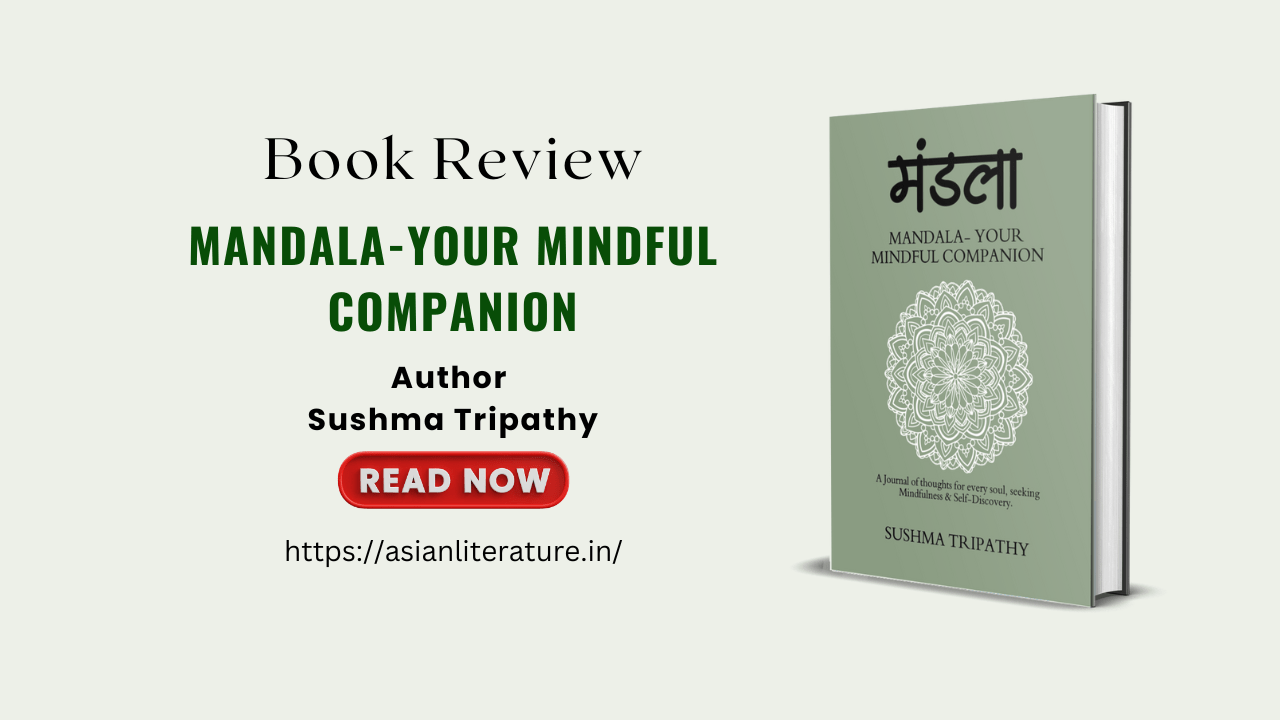
Mandala
Journeying Through Circles of Stillness, Creativity, and Self-Discovery
In a world saturated with digital overload and mental clutter, Sushma Tripathy’s Mandala – Your Mindful Companion arrives as a much-needed invitation to slow down, breathe deeply, and listen inward. More than just a guided journal, this work is a hybrid of ancient wisdom, artistic expression, and soulful reflection. It gently encourages the reader not to merely draw mandalas but to inhabit them, to breathe life into each circle, and in return, let them reveal the sacred space within.
At its core, Mandala – Your Mindful Companion is a meditative art journal. But to call it just that would be an oversimplification. Tripathy weaves personal storytelling, historical context, spiritual insight, and guided artistic practice into a seamless tapestry that transforms the act of drawing into a portal for self-healing. Her personal journey—rooted in a desire for inner clarity and a coach’s guidance—forms the emotional heartbeat of the book. This vulnerability invites readers to engage with their own inner landscapes with similar honesty.
The book is thoughtfully divided into six chapters, each progressing like concentric rings of a mandala itself—from understanding the concept to exploring deeper personal and spiritual dimensions. In the opening chapters, Tripathy unpacks the essence of mandalas from multiple cultural and spiritual perspectives—Hinduism, Buddhism, Mayan cosmology, Native American traditions, and even Gothic Christianity’s rose windows. This multicultural approach reminds us that the circle is a universally resonant symbol, anchoring us to cycles, wholeness, and unity.
But this is not just theory. The strength of the book lies in its interactive depth. Chapter by chapter, readers are gently ushered from learning to doing. Level 1 (Centering) encourages basic pattern creation with reflection. By Level 5 (Intuitive Flow), the book becomes a canvas for the soul’s unfiltered expression. Each level is scaffolded with prompts, affirmations, and reflective check-ins that make the journey accessible even to those who’ve never held a pen for anything but a to-do list.
One of the most impressive elements is the chapter on “Chakras and Mandalas.” Here, Tripathy pairs each chakra with a mandala coloring activity, associated affirmations, and personal reflection points. This fusion of color psychology, energy healing, and sacred geometry adds a new dimension to mindful journaling—one where the act of coloring is imbued with intentionality and healing potential.
Equally compelling are the “Mandala Mood Quizzes”—playful yet meaningful exercises that guide readers to explore their current emotional and spiritual state through symbolic choices. Whether one resonates with the calmness of a wave or the intensity of fire, the quizzes help clarify what kind of mandala might serve them best in the moment.
Tripathy’s language is consistently gentle, affirming, and encouraging. Sentences like “Start from the center, you’re safe” and “Let go of the need to ‘make it perfect’” reflect the book’s central message: this is a space for presence, not performance. There is no pressure to create “art”; the process is the purpose.
Visually, the journal is minimalist yet soulful. Clean page layouts, dotted guides, and hand-drawn motifs create a sense of spaciousness. The instructions are clear but not rigid, always leaving room for interpretation. The symbol dictionary is a particularly thoughtful touch, allowing readers to infuse their mandalas with personal and universal meaning—from the lotus symbolizing divine awakening to the spiral representing inner transformation.
What makes this book stand out from the growing pile of adult coloring books and journals is its spiritual depth. It doesn’t commercialize mindfulness—it honors it. It doesn’t promise instant peace—it cultivates it through slow, intentional practice. The repeated refrain that “every smudge, every imbalance is a part of your story” reinforces the idea that imperfection is not a flaw but a feature of authenticity.
Critically speaking, if there is one minor limitation, it might be accessibility for those unfamiliar with spiritual or esoteric concepts. While the book offers plenty of entry points, a complete newcomer to mandalas or inner work might initially feel overwhelmed by the symbolic depth. However, Tripathy wisely advises the reader to begin with curiosity rather than mastery. This makes the journal forgiving and adaptable—qualities any beginner will find reassuring.
In conclusion, Mandala – Your Mindful Companion is not just a book—it’s a breathing space, a silent teacher, a creative confidante. Whether you are an artist, a seeker, or someone simply navigating stress and overstimulation, this journal offers a beautiful blend of art, heart, and healing. It’s not about how well you draw. It’s about how deeply you connect. And that, perhaps, is the truest mark of its brilliance.
Book Title: Mandala-Your Mindful Companion
Author: Sushma Tripathy
Publisher: Evincepub Publishing

